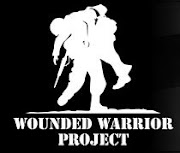
In the late morning of May 8, 2004, a 30-truck logistical convoy snaked its way along an Iraqi highway just north of Baghdad International Airport on its way to Logistics Support Area Anaconda. In the lead gun truck rode SFC Michael Segreaves, a squad leader with the 810th Military Police Company charged with protecting the convoy with the help of 18 other MPs.
As the convoy neared a cloverleaf where two highways connect, surrounded by tall buildings, Segreaves could see several plumes of smoke near the roads. When the convoy entered the cloverleaf, Segreaves realized the area was a prime ambush site –and that the smoke was rising from an earlier ambush.
Just as he realized that, the ambush began.
Several improvised explosive devices (IEDs) exploded near the convoy as it turned into the cloverleaf. A single rocket propelled grenade flew toward the convoy, but missed it completely.
“The guy that fired that RPG couldn’t hit anything,” Segreaves remarked.
While the front of the convoy came under attack, the rear element saw what it thought was friendly forces.
“The rear gun radioed me and said that he saw dismounted troops and wanted to check them out,” Segreaves explained.
Segreaves suspected they were not friendly forces and wanted the convoy to keep moving --but the rear element stopped anyway. There was no reply when he tried to call them back on the radio.
“We lost communication with each other,” Segreaves explained.
The lead element of the convoy drove onto the overpass, where they encountered a stranded Stryker vehicle.
The Stryker was part of another convoy from Segreaves’ camp that had been attacked earlier that morning. U.S. forces were in the process of loading it onto a Heavy Equipment and Truck Transport (HETT), but the disabled Stryker was continuing to block traffic.
Segreaves established a security formation around the stranded Stryker, approaching a sergeant in the Stryker to determine how long it would take to load the vehicle onto the HETT. Suddenly, the rooftops erupted with small arms fire. The insurgents launched the main thrust of their ambush, including more RPGs and IEDs.
“This was my very first convoy into Iraq, and it was a toe-to-toe fight,” Segreaves said.
Segreaves wanted to call for close air support but realized he did not have the correct frequencies, so he asked the Stryker sergeant. Segreaves then ran towards the rear of the convoy to reestablish communications with the rear security team -- all while continuing to direct suppressive fire to protect the convoy and recover the Stryker. The rear element soon arrived.
Able to turn more attention to the fight now that he had accounted for the rest of convoy, Segreaves returned to the front of the convoy and continued to fight beside his Soldiers. The ambush had worsened; now insurgents were attacking from the rear, from rooftops and even from below the overpass.
“My guys were dumping a lot of ammo,” Segreaves said. “I’m thinking the whole time, ‘fire discipline, fire discipline,’ because I don’t want to be standing out here with my 9mm.”
Minutes after he asked the Stryker sergeant to call for air support, attack helicopters began circling overhead. The insurgents fled at the sound of rotors, and Segreaves and his Soldiers continued with their mission.
Later, an infantry unit responded to the area and cleared the buildings where the convoy had drawn fire. Segreaves later learned that his earlier fight resulted in nine insurgent casualties. There was no damage to his convoy and no U.S. casualties.
“I didn’t do anything that any other NCO wouldn’t do,” Segreaves shared humbly. He said it almost felt awkward to receive the Bronze Star for Valor.
“Without my squad I would be nothing. I was blessed to have great guys,” Segreaves said.






No comments:
Post a Comment